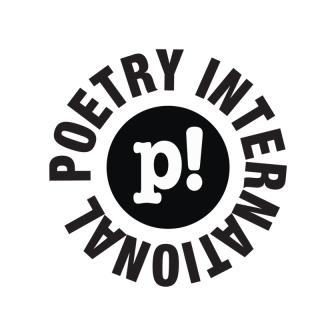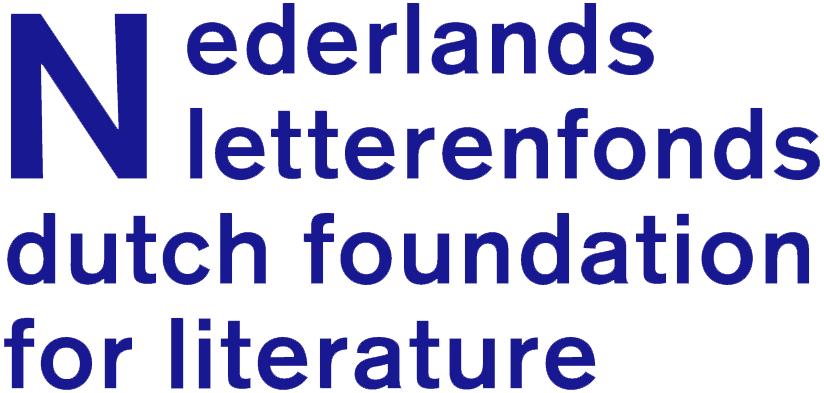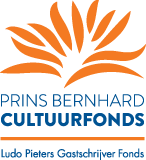Article
The “Simple Logic”of Jiban Narah's Poetry
The River, the Boat and the World

July 08, 2009
Assamese poet Jiban Narah talks to Arundhathi Subramaniam about what it means to chart a course between the tribal and the regional, the local and the global.
Arundhathi Subramaniam: You’ve said that you’ve been shaped by the dual forces of your Mishing tribal heritage and mainstream Assamese culture. Can you elaborate on how these have actually moulded your poetry?
Jiban Narah: Yes, I am born and brought up in the Mishing cultural ethos. But this does not mean I brand myself a tribal poet. I feel proud to introduce myself as a modern Assamese poet. In fact, the very foundations of Assamese identity have been formed by heterogeneous tribes and ethnic groups. This heterogeneity and diversity is perhaps a rare phenomenon in the rest of the country. But Assam is known as a land of ethnic, linguistic diversity, and the greater part of Assamese society has been formed through a historical process of evolution and mutual interaction. So I am a Mishing by birth and practise the same culture and language in my close family circles. But all through my academic career – from the primary standard to the postgraduate level – I’ve been instructed in the mainstream Assamese language. This allows me to inhale the fresh breeze of Assamese culture while standing on the threshold of my ethnic identity.
As a young modern Assamese poet, my poetry has been quite naturally shaped by the both these cultures. These bilingual and bicultural strands are almost inseparable from each other. I believe the Mishing myths, tradition, folk-tales and stories that find a place in most of my poems have added novelty and freshness to modern Assamese poetry. But this typical aspect of my poetry shouldn’t be overstated. I keep the door of my poetry wide open to modern society and the world. But I also try to resist those concepts and ideas which might exterminate the inner core of my cultural identity. I try not to lose the uniqueness and the subtle nuances of language that are typical of my heritage.
AS: Tell me more about the Mishings. Have they been more or less assimilated into the Assamese mainstream or do they retain distinctive aspects of their cultural identity? What was it like, growing up as a member of this community? How does it view you today?
JN: The Mishings are basically a riverine tribe scattered in the Brahmaputra valley. Next to the Bodos, the Mishings are the largest tribe in the state of Assam. They usually live in houses on stilts. The tribe is very rich in folk culture and folk literature. Most of the members are educated in Assamese medium schools, though some of them have had the opportunity to be instructed in the native tongue, mostly in the Mishing-dominated areas. Accordingly, some people have shown an interest in writing in the Mishing language, but this literature is still in a very rudimentary form.
With regard to the question of autonomy and self determination, the Mishings are also raising their voice and continuing their political activities like other tribes of Assam. Most of the tribes represented by their elite-leadership are on the move, demanding autonomy in order to accelerate their socio-economic development. But the general populace is yet to be mobilised. Such political activities do not appear to have any positive impact on the lives of the community.
What remains significant is that the Mishing community, unlike others, has been very intimately assimilated into the mainstream Assamese society and culture. Consequently, it plays a prominent role in the evolution of the larger Assamese identity. Many people from the Mishing community have been involved in diverse fields of Assamese literature and culture. A close study of the mainstream classical dance form, “Satriya Nritya”, for example, will reveal that it has borrowed or assimilated several gestures (mudras) from the Mishing folk dance form. So, apart from the Aryan influences, Assamese identity and culture owe a great deal to non-Aryan ethnic resources.
Yes, the Mishings have their own identity, but this is not opposed to the greater Assamese identity. Through I am a Mishing by birth, I write in Assamese and, as a poet, I belong to the Assamese mainstream. Viewed critically, tribal thoughts and ideas are also found at the heart of mainstream Assamese poetry. Many poets of tribal origin have written poetry in the Assamese language. As a result, Assamese poetry has attained greater depth and variety. The tribes of Assam are the fundamental units of Assamese culture. One can’t think of an Assamese culture in isolation from the tribes.
My childhood was a mix of all the good and evil aspects of a traditional tribal society. I’ve experienced since my early childhood all the varied chapters of suffering and misery, caused mostly by problems like floods, erosion and mass illiteracy. Poverty remains a part of the Mishing existence. But in the middle of all these issues, the Mishing tribal society has remained rich in folk dance, songs, festivity and community celebration. The river and the boat – an inseparable part of the life of a riverine community – have stayed with me and recur in my poems.
AS: What are your views on contemporary poetry in Assam? What are the trends and impulses that you observe?
JN: Assamese poetry has an old tradition of its own. Passing through several stages of its known history, it has gradually attained a distinctive modern form. Its whole history and transformation through the ages is really fascinating. I believe contemporary Assamese poetry has maintained a steady growth. No Assamese poet is trying to set a trend contrary to our cultural milieu and heritage merely in the name of experimenting with concepts and values associated with ‘globalisation’ and ‘postmodernism’. In other words, the contemporary poets haven’t disengaged from their roots while searching for new forms and themes.
The great poets of the world have always been able to retain both. They have always presented the regional in a universal package. Doesn’t your own poetry in English embody a distinctive Indian heritage and culture? There is in Tamil a vibrant store of literature, culture and classical dance-form which you can never escape from. All these will make direct inroads into your poetry. A.K. Ramanujan must also have remembered Tamil classical poetry when writing his poems in English. Accordingly, our poets also have made new experiments with form, theme and technique, but in a manner that is recognizable and workable in a specific cultural environment.
AS: How has your work as a poet evolved over your six collections? Have there been any significant changes in direction?
JN: My published works (from the first to the last) reveal different stages of evolution. Each of them represents a different set of themes, styles and modes of expression. In the early works, folk life and folk poetry had played a prominent role. But the later works try to articulate the pain and alienation of modern civic life, subaltern realities and a globalised ethos. While exploring this, I’ve tried to keep away from the tribal and folk world in order to come to terms with the changing socio-economic realities. Naturally, this has also affected the structural composition of my poems. I've tried to adopt a new perspective while observing my history and tradition, while trying to analyse the new trends of a globalised economy and politics.
Time, values, society – everything is changing; so is poetry. But poetry, like every other concept, has its anchor in society, in culture. The transformation of my poetry follows this simple logic.
Jiban Narah: Yes, I am born and brought up in the Mishing cultural ethos. But this does not mean I brand myself a tribal poet. I feel proud to introduce myself as a modern Assamese poet. In fact, the very foundations of Assamese identity have been formed by heterogeneous tribes and ethnic groups. This heterogeneity and diversity is perhaps a rare phenomenon in the rest of the country. But Assam is known as a land of ethnic, linguistic diversity, and the greater part of Assamese society has been formed through a historical process of evolution and mutual interaction. So I am a Mishing by birth and practise the same culture and language in my close family circles. But all through my academic career – from the primary standard to the postgraduate level – I’ve been instructed in the mainstream Assamese language. This allows me to inhale the fresh breeze of Assamese culture while standing on the threshold of my ethnic identity.
As a young modern Assamese poet, my poetry has been quite naturally shaped by the both these cultures. These bilingual and bicultural strands are almost inseparable from each other. I believe the Mishing myths, tradition, folk-tales and stories that find a place in most of my poems have added novelty and freshness to modern Assamese poetry. But this typical aspect of my poetry shouldn’t be overstated. I keep the door of my poetry wide open to modern society and the world. But I also try to resist those concepts and ideas which might exterminate the inner core of my cultural identity. I try not to lose the uniqueness and the subtle nuances of language that are typical of my heritage.
AS: Tell me more about the Mishings. Have they been more or less assimilated into the Assamese mainstream or do they retain distinctive aspects of their cultural identity? What was it like, growing up as a member of this community? How does it view you today?
JN: The Mishings are basically a riverine tribe scattered in the Brahmaputra valley. Next to the Bodos, the Mishings are the largest tribe in the state of Assam. They usually live in houses on stilts. The tribe is very rich in folk culture and folk literature. Most of the members are educated in Assamese medium schools, though some of them have had the opportunity to be instructed in the native tongue, mostly in the Mishing-dominated areas. Accordingly, some people have shown an interest in writing in the Mishing language, but this literature is still in a very rudimentary form.
With regard to the question of autonomy and self determination, the Mishings are also raising their voice and continuing their political activities like other tribes of Assam. Most of the tribes represented by their elite-leadership are on the move, demanding autonomy in order to accelerate their socio-economic development. But the general populace is yet to be mobilised. Such political activities do not appear to have any positive impact on the lives of the community.
What remains significant is that the Mishing community, unlike others, has been very intimately assimilated into the mainstream Assamese society and culture. Consequently, it plays a prominent role in the evolution of the larger Assamese identity. Many people from the Mishing community have been involved in diverse fields of Assamese literature and culture. A close study of the mainstream classical dance form, “Satriya Nritya”, for example, will reveal that it has borrowed or assimilated several gestures (mudras) from the Mishing folk dance form. So, apart from the Aryan influences, Assamese identity and culture owe a great deal to non-Aryan ethnic resources.
Yes, the Mishings have their own identity, but this is not opposed to the greater Assamese identity. Through I am a Mishing by birth, I write in Assamese and, as a poet, I belong to the Assamese mainstream. Viewed critically, tribal thoughts and ideas are also found at the heart of mainstream Assamese poetry. Many poets of tribal origin have written poetry in the Assamese language. As a result, Assamese poetry has attained greater depth and variety. The tribes of Assam are the fundamental units of Assamese culture. One can’t think of an Assamese culture in isolation from the tribes.
My childhood was a mix of all the good and evil aspects of a traditional tribal society. I’ve experienced since my early childhood all the varied chapters of suffering and misery, caused mostly by problems like floods, erosion and mass illiteracy. Poverty remains a part of the Mishing existence. But in the middle of all these issues, the Mishing tribal society has remained rich in folk dance, songs, festivity and community celebration. The river and the boat – an inseparable part of the life of a riverine community – have stayed with me and recur in my poems.
AS: What are your views on contemporary poetry in Assam? What are the trends and impulses that you observe?
JN: Assamese poetry has an old tradition of its own. Passing through several stages of its known history, it has gradually attained a distinctive modern form. Its whole history and transformation through the ages is really fascinating. I believe contemporary Assamese poetry has maintained a steady growth. No Assamese poet is trying to set a trend contrary to our cultural milieu and heritage merely in the name of experimenting with concepts and values associated with ‘globalisation’ and ‘postmodernism’. In other words, the contemporary poets haven’t disengaged from their roots while searching for new forms and themes.
The great poets of the world have always been able to retain both. They have always presented the regional in a universal package. Doesn’t your own poetry in English embody a distinctive Indian heritage and culture? There is in Tamil a vibrant store of literature, culture and classical dance-form which you can never escape from. All these will make direct inroads into your poetry. A.K. Ramanujan must also have remembered Tamil classical poetry when writing his poems in English. Accordingly, our poets also have made new experiments with form, theme and technique, but in a manner that is recognizable and workable in a specific cultural environment.
AS: How has your work as a poet evolved over your six collections? Have there been any significant changes in direction?
JN: My published works (from the first to the last) reveal different stages of evolution. Each of them represents a different set of themes, styles and modes of expression. In the early works, folk life and folk poetry had played a prominent role. But the later works try to articulate the pain and alienation of modern civic life, subaltern realities and a globalised ethos. While exploring this, I’ve tried to keep away from the tribal and folk world in order to come to terms with the changing socio-economic realities. Naturally, this has also affected the structural composition of my poems. I've tried to adopt a new perspective while observing my history and tradition, while trying to analyse the new trends of a globalised economy and politics.
Time, values, society – everything is changing; so is poetry. But poetry, like every other concept, has its anchor in society, in culture. The transformation of my poetry follows this simple logic.
© Arundhathi Subramaniam
Translator: Kamal C. Saikia
Sponsors





Partners
LantarenVenster – Verhalenhuis Belvédère

